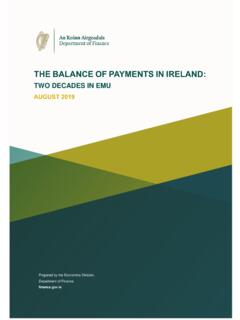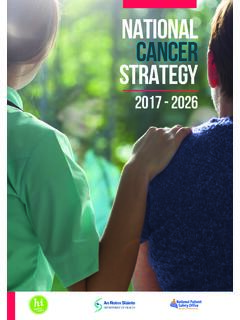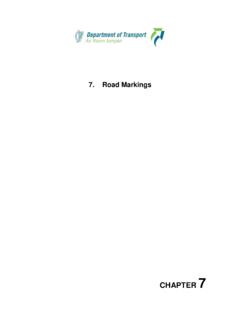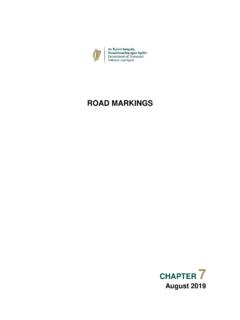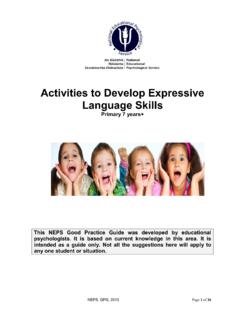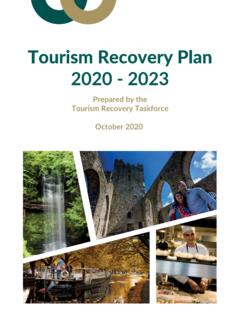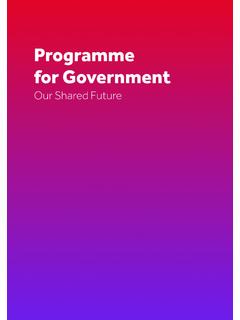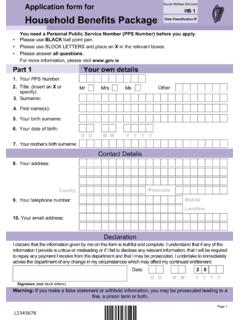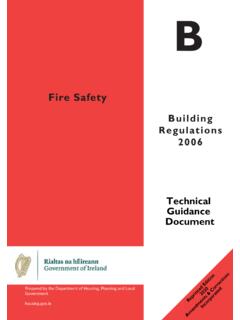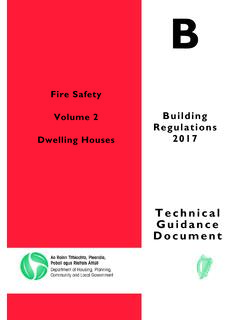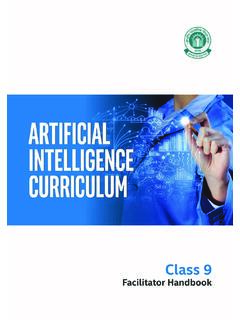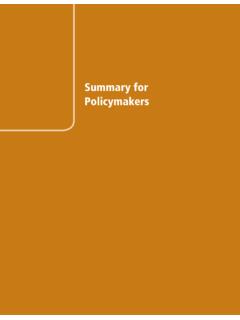Transcription of LITERACY AND NUMERACY FOR LEARNING AND LIFE
1 LITERACY AND NUMERACY FOR LEARNING AND LIFEThe National Strategy to Improve LITERACY and NUMERACY among Children and Young people 2011-2020 DEPARTMENT OF EDUCATION AND SKILLSP ublished byDepartment of Education and SkillsMarlborough StreetDublin 1 Department of Education and Skills, 2011 LITERACY Booklet Cover ENGLISH:Layout 1 03/11/2011 13:56 Page 1 The Department of Education and Skills wishes to thank the schools below for permission to use photographs: Schull Community College, Colla Road, Schull, Co. Cork Whitechurch National School, Whitechurch Road, Dublin 16 LITERACY Booklet Cover ENGLISH:Layout 1 03/11/2011 13:56 Page 31 LITERACY AND NUMERACY FOR LEARNING AND LIFEThe National Strategy to Improve LITERACY and NUMERACY among Children and Young people2011-2020 LITERACY Booklet NEW 1:Layout 1 03/11/2011 13:58 Page 1A NOTE FROM MINISTER RUAIR QUINN, TDIn July I launched LITERACY and NUMERACY for LEARNING and Life the nationalstrategy to improve LITERACY and NUMERACY among children and young people.
2 Thestrategy was developed following an extensive consultation process and I want tothank the many individuals, schools, groups and organisations that contributed toshaping this important document. This leaflet gives you a flavour of the key parts of the Strategy and I hope it willencourage you to access the full document on the Department s believe passionately that LITERACY and NUMERACY are among the most important lifeskills that our schools teach. Children should not leave school without havingmastered these skills to the best of their abilities. LITERACY and NUMERACY skills are crucial to a person s abilityto develop fully as an individual, to live a satisfying and rewarding life and to participate fully in our that all young people acquire these skills is one of the greatest contributions that we can make toachieving social justice and equity in our country. However, we know that some children are not developing these skills as they should. The Programme forGovernment makes clear that the Government is determined that all young people will leave school able toread, communicate orally, in writing and in digital media, and able to understand and use mathematics in theireveryday lives and in further LEARNING .
3 LITERACY and NUMERACY for LEARNING and Life sets out how we will work toachieve these crucially important goals over the period to 2020. It sets ambitious targets and describes theactions that we must take to improve the teaching and LEARNING of LITERACY and NUMERACY . LITERACY and NUMERACY Strategy2 Ruair Quinn, TDMinister forEducation and Skills LITERACY Booklet NEW 1:Layout 1 03/11/2011 13:58 Page 2 Realising the ambitious actions and targets in the strategy would be challenging in any circumstances, but willbe especially so as we strive to curtail public expenditure in the current climate. This means that we will have tofind the resources to implement this strategy by re-prioritising spending and by ensuring that we get the verybest outcomes from existing financial and human resources. Yet, as we face these very difficult challenges, I am heartened by the very large number of people andorganisations that participated in the national consultation process that has informed the writing of thisstrategy.
4 Their engagement demonstrates how strongly Irish people both within the education system andbeyond are committed to improving LITERACY and NUMERACY standards. This strategy is intended to harness andfocus that commitment in a concerted national effort to achieve world-class LITERACY and NUMERACY skills amongour children and young people. I look forward to working with you in this vital national task. Ruair Quinn, TD, Minister for Education and SkillsLiteracy and NUMERACY Strategy3 LITERACY Booklet NEW 1:Layout 1 03/11/2011 13:58 Page 3 THE STRATEGY IS FOR ALL OF USLiteracy and NUMERACY for LEARNING and Life the nationalstrategy to improve LITERACY and NUMERACY among children andyoung people is a very important blueprint for how we willwork to reform and improve the teaching and LEARNING of literacyand NUMERACY . The Strategy sets out a comprehensive set oftargets and actions covering the teaching, LEARNING andassessment of LITERACY and NUMERACY from early childhood tothe end of schooling.
5 Over time, it will bring significant changes to areas such asteachers professional development, the curriculum in primaryand post-primary schools, the work of school management, theway we use assessment in LITERACY and NUMERACY , how schoolsreport to parents, boards of management and the Departmentabout student progress. The Strategy acknowledges that theeducation system alone cannot deliver better LITERACY andnumeracy and it envisages a central role for parents andcommunities in supporting and encouraging children and youngpeople to learn to use and understand LITERACY and NUMERACY intheir lives. ACCESS THE FULL VERSION OF THE STRATEGYThis leaflet provides a short summary of key parts of theStrategy. The full text of the Strategy is available on thewebsite of the Department ( ). You willalso find submissions, many of them from schools,and other documents arising from the consultationprocess that shaped the writing of the Strategy on thewebsite.
6 HOW HAS THE STRATEGY BEEN DESIGNED? The development of LITERACY and NUMERACY for LEARNING andLifewas informed by an extensive consultation the publication of the Department s Draft Plan toimprove LITERACY and NUMERACY in schools in November 2010, apublic consultation process was launched. Almost 480submissions were received and a series of face-to-faceconsultative meetings were held with key organisations. Manyteachers and school staffs made submissions and severalcolleges and university education departments submittedextensive research-based documents to the of the written submissions and a brief listing of anyadditional points raised at the face-to-face meetings areavailable on the website of the Department of Education andSkills. Department officials also made school visits and consulted withofficials and experts in the Department of Children and YouthAffairs, the Educational Research Centre, Drumcondra, AnChomhairle Um Oideachas Gaeltachta & Gaelscola ochta theNational Council for Curriculum and assessment and theTeaching Council.
7 LITERACY and NUMERACY Strategy4 LITERACY Booklet NEW 1:Layout 1 03/11/2011 13:58 Page 4 KEY AREAS IN THE STRATEGYThe Strategy addresses six key areas aimed at improvingliteracy and NUMERACY outcomes, these are: Enabling parents and communities to support children sliteracy and NUMERACY development Improving teachers and early childhood education and carepractitioners professional practice through changes to bothpre-service and in-service education Building the capacity of school leadership to leadimprovements in the teaching and assessment of literacyand NUMERACY in schools Getting the content of the curriculum for LITERACY andnumeracy right at primary and post-primary levels bymaking sure that the curriculum is clear about what weexpect students to learn at each stage Targeting available additional resources on learners withadditional needs, including students from disadvantagedcommunities, students LEARNING English as an additionallanguage and students with special educational needs Improving how teachers.
8 Schools and the educationalsystem use good assessment approaches to plan the nextsteps for each learner and monitor IN THE STRATEGYThe Strategy sets a series of targets for improving LITERACY andnumeracy standards for the period 2011 to 2020. These are:Improve our attitudes to LITERACY and NUMERACY Raise public awareness of the importance of oral andwritten language in all its forms (including print, writing anddigital media) Foster an enjoyment of reading among children and youngpeople Create greater awareness of, and more positive attitudestowards, Mathematics among the public Promote better attitudes to Mathematics among childrenand young peopleImprove outcomes at early childhood level Improve the oral-language competence of very youngchildren in early childhood care and education (ECCE)settings and their readiness to develop early mathe-matical language and ideasImprove outcomes at primary school level Ensure that each primary school sets goals and monitorsprogress in achieving demanding but realistic targets for theimprovement of the LITERACY and NUMERACY skills of itsstudents in a school improvement plan Increase the percentage of primary children performing atLevel 3 and Level 4 (the highest levels) in the NationalAssessment of Mathematics and English Reading by at least5 percentage point at both second class and sixth class by2020 LITERACY and NUMERACY Strategy5 LITERACY Booklet NEW 1:Layout 1 03/11/2011 13.
9 58 Page 5 Reduce the percentage of children performing at or belowLevel 1 (minimum) in the National assessment ofMathematics and English Reading by at least 5 percentagepoints at both second class and sixth class by 2020 Increase awareness of the importance of digital LITERACY andinclude assessments of primary students ability to readdigital material as part of the national assessments ofEnglish reading Improve outcomes at post-primary level Ensure that each post-primary school sets and monitorsprogress in achieving demanding but realistic targets for theimprovement of the LITERACY and NUMERACY skills of itsstudents in a school improvement plan Extend the National assessment of Mathematics andEnglish Reading to assess the performance of students atthe end of second year in post-primary education; use datafrom these assessments to establish the existing levels ofachievement and to set realistic targets for improvement,similar to those adopted at the primary level Increase awareness of the importance of digital LITERACY andinclude assessments of post-primary students ability toread digital material as part of the national assessments ofEnglish reading Increase the percentage of 15-year old students performingat or above Level 4 and Level 5 (the highest levels) in PISA reading LITERACY and NUMERACY tests by at least 5 percentagepoints by 2020 Halve the percentage of 15-year old students performing ator below Level 1 (the lowest level) in PISA reading literacyand NUMERACY tests by 2020 Increase the percentage of students taking the Higher LevelMathematics examination at the end of junior cycle ( Certificate examination or its equivalent)
10 To 60 percent by 2020 ACTIONS WILL BE IMPLEMENTED OVER THE PERIOD 2011 TO 2020 The actions in the Strategy will be implemented over its lifetimefrom 2011 to 2020. Many of the actions in the Strategy are long-term initiatives, the effect of which will not be seen for a goodnumber of years, while others will have a more immediateeffect. The Minister has stated that all the actions need to betackled with a sense of urgency and commitment. Each of theactions in the Strategy has a timeline and clear leadresponsibility for delivery is assigned. Actions in the Strategy to support parents and communitiesinclude: Supporting a national information campaign to build upawareness of the important role that parents andcommunities can play in supporting LITERACY and numeracylearning Providing better information to parents to enable them tosupport their children s language, LITERACY and numeracydevelopmentLiteracy and NUMERACY Strategy6 LITERACY Booklet NEW 1:Layout 1 03/11/2011 13:58 Page 6 Encouraging schools to work closely with parents and tosupport parents in helping their children s LEARNING .
